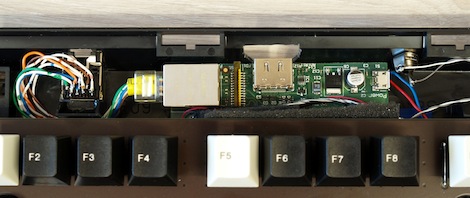Even though the Raspberry Pi has, from the very beginning, been touted as an educational computer, we’ve seen neither hide nor hare of coursework, lesson plans, or even computer sciencey tutorials using the Raspi. We’re guessing academia works at a much slower pace than the average hardware hacker, but [Alex Chadwick] at Cambridge University has managed to put together an online tutorial on developing an operating system from scratch for the Raspi.
The goal of this tutorial is to throw a budding Raspi tinkerer into the strange and confusing world of registers, hexadecimal, and ARMv6 assembly. After going through the necessary toolchain, [Alex]’s tutorials cover blinking the ‘OK’ LED on the Raspberry Pi using only assembly.
The OS development guide goes on from there to include drawing graphics on the screen and even accepting input from a USB keyboard.
It’s important to point out what [Alex]’s tutorial isn’t; even though this series of tutorials goes through manipulating the bare metal of the Raspberry Pi, don’t expect to be porting UNIX to the Raspi after going through these guides. That being said, after completing these tutorials, you’ll be in a fabulous position for building your own homebrew OS on the Raspberry Pi.

















